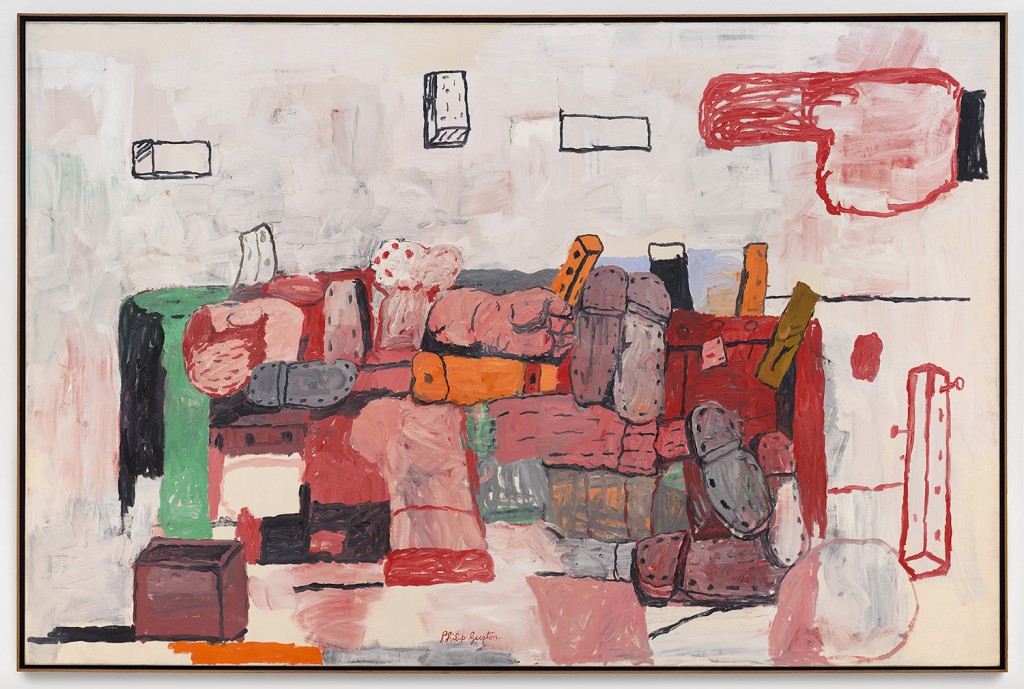American icons: Philip Guston
05.28.2015
Guston, Philip, Evidence , 1970, Copyright et Credit photo: © Estate of Philip Guston. Photo SFMOMA / Ben Blackwell
Philip Guston, Evidence, 1970, oil on canvas, 191.14cm x 290.20 cm, San Francisco Museum of Modern Art
Emilie Jean, lecturer for the Réunion des Musées Nationaux, shares with memento a few words about certain works of art selected from the exhibition Icônes Américaines, Chefs-d’œuvre du SFMOMA et de la Collection Fisher au Grand Palais (American Icons, masterworks from SFMOMA and the Fisher collection at the Grand Palais), which diptyque is proud to be supporting.
An abstract expressionist painter who turned to a form of figuration during the 60s, Philip Guston creates Evidence in 1970 to complete this transitional period. The dark, fun-filled, crude shapes taken from the sphere of comic strips shocked his contemporaries. Did they deem him vulgar or coarse? Exactly what he claimed to be. It is actually their world that he showed through his work, with the piling up of used shoes, the flying bricks, the hand (his?) with its index finger pointing at something undefined and disturbing, and the bodies lying on the ground. Having their roots in the popular culture of the day, these speak of the artist from his workshop to the outside world: “I keep smashing any attempt to paint images or to think about art. If someone bursts into laughter in front of my painting, it is exactly what I wish and all I’m expecting.”

